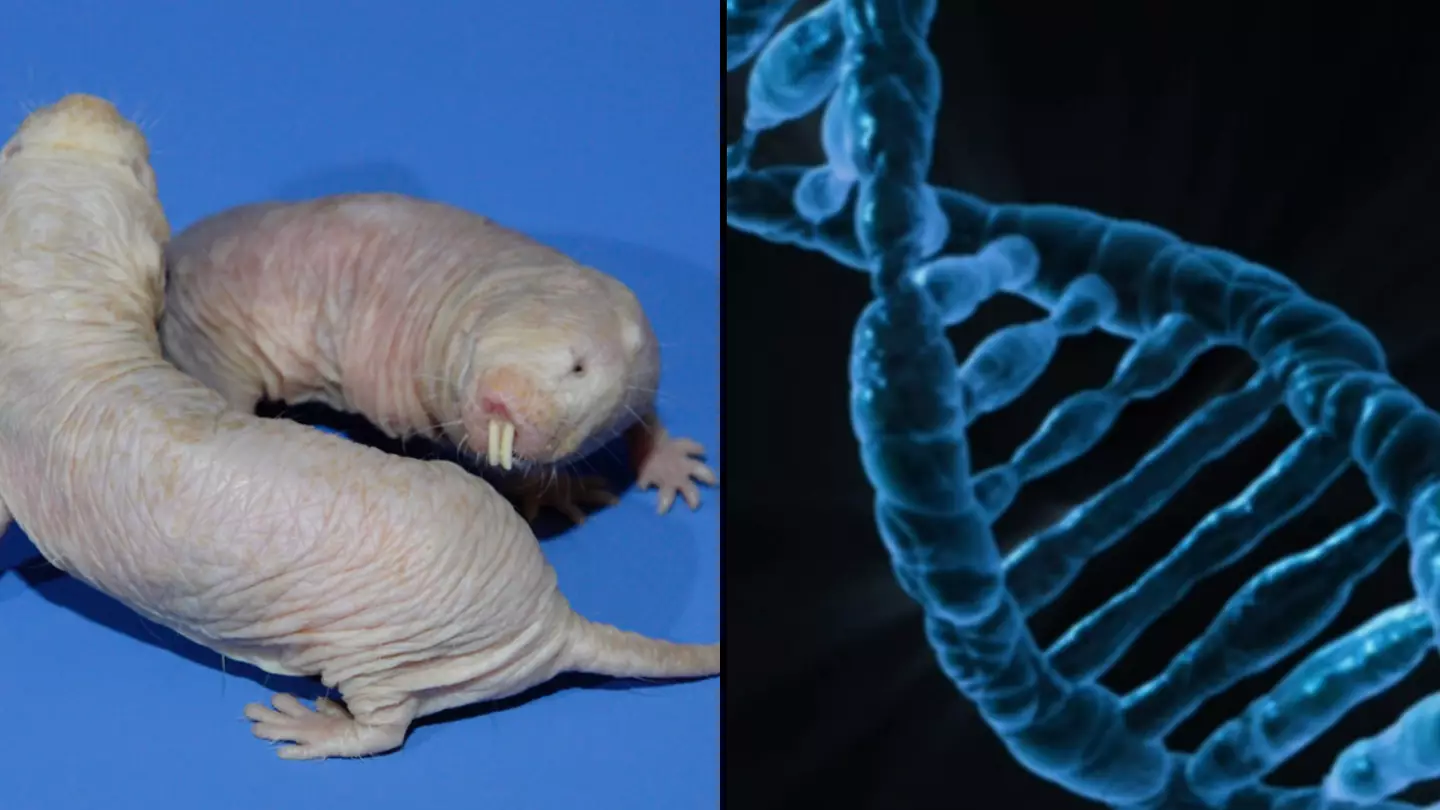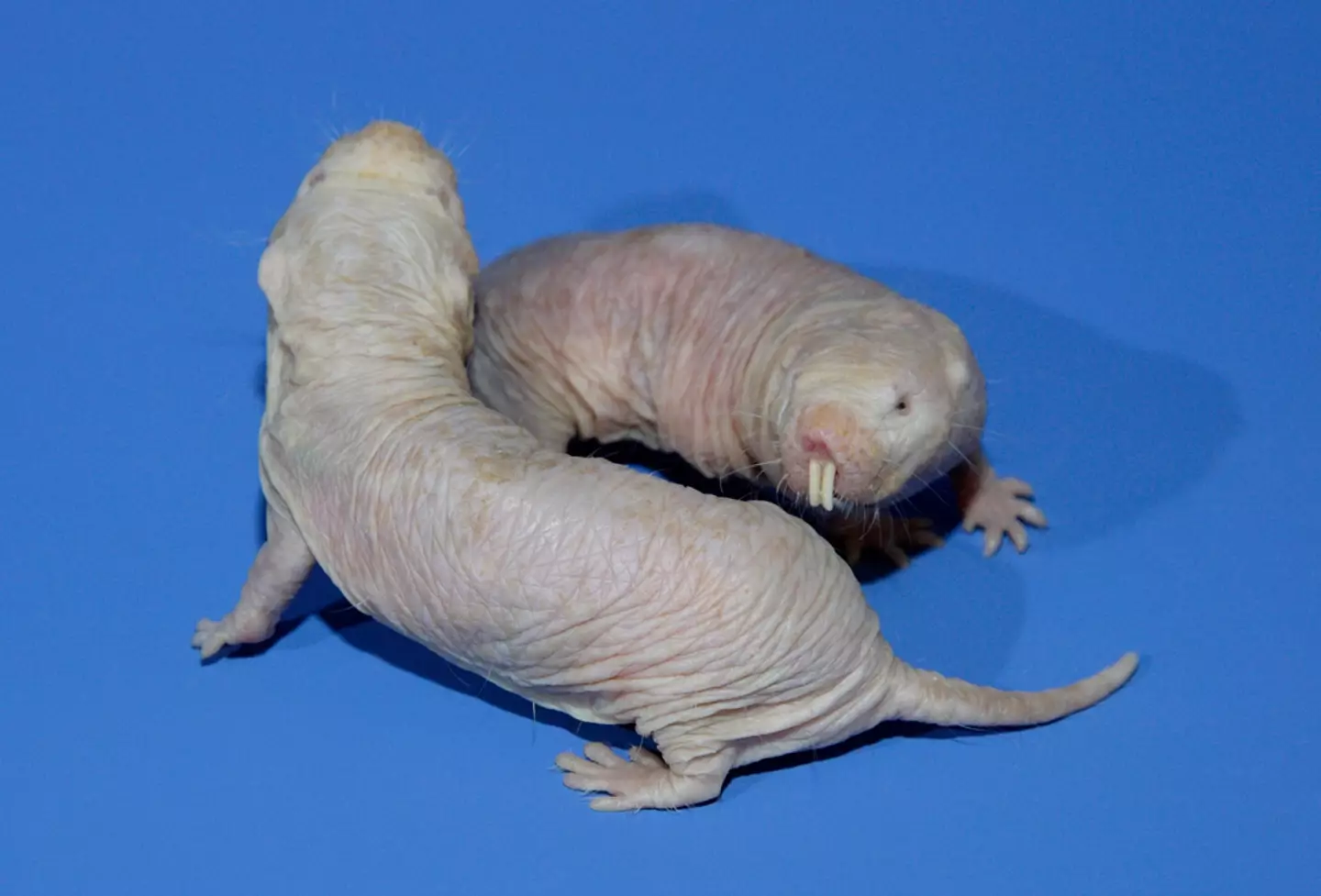
Naked mole rats could hold the key to extending all our lives.
The... ahem... unique-looking rodents with pink wrinkled skin and large gnashers that served as the inspiration for Rufus in Kim Possible were part of a study examining a gene that could help humans live longer.
Scientists were able to successfully improve the lifespan of mice by transferring the hyaluronan synthase 2 (HAS2) naked mole rats have. The gene is responsible for producing hyaluronic acid, a gooey substance that helps protect cells from damage as it is found in the jelly-like substance surrounding them.

Advert
It also plays a major role as a component in connective tissue and helps with wound healing, the lubrication of joints and immune function.
Since naked mole rats produce more hyaluronic acid than other rodents, it made them the perfect candidate for the study. Also, with regards to their small size, they have a lifespan of up to 41 years, which is around ten times as long as similar-sized rodents, according to the University of Rochester.
Naked mole rats should only live to be around six-years-old, but they show few signs of aging that scientists would expect to see in mammals.
Unlike many other species, as they age, naked mole rats do not often contract diseases, such as neurodegeneration, cardiovascular disease, arthritis, and cancer.
.jpg)
Advert
They actually have a remarkable resistance to cancer and oxygen deprivation in particular, and females are fertile until they die, while most mammals have a limited number of eggs and become less fertile with age.
Researchers at the University of Rochester examined the mice they genetically modified to produce the naked mole rat version of the HAS2 gene.
This modification led to improved health and an approximate 4.4% increase in the median lifespan of the modified mice and they were also more resistant to cancer.
‘Our study provides a proof of principle that unique longevity mechanisms that evolved in long-lived mammalian species can be exported to improve the lifespans of other mammals,’ said Dr Vera Gorbunova, one of the study’s authors.
The researchers previously found that HMW-HA is one mechanism responsible for the remarkable resistance to cancer naked mole rats have.
Advert

In comparison to mice and humans, naked mole rats have about ten times more HMW-HA in their bodies. They were more likely to form tumours when the researches removed the HMW-HA from their bodies.
Dr Gorbunova said: “It took us 10 years from the discovery of HMW-HA in the naked mole rat to showing that HMW-HA improves health in mice,’ said Dr Gorbunova. "Our next goal is to transfer this benefit to humans.”
Dr Andrei Seluanov, another author of the study, said: “We already have identified molecules that slow down hyaluronan degradation and are testing them in pre-clinical trials.
“We hope that our findings will provide the first, but not the last, example of how longevity adaptations from a long-lived species can be adapted to benefit human longevity and health.”
